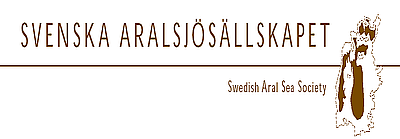7b.
Means of mobility – technology and systems
Since the environmental impacts of transport are so large, the means we use to transport ourselves or our goods are of key importance. There has also been a considerable development of the technology of transport. Equally important is the development of transport infrastructure as well as the organization of transport and its alternatives from walking, biking, cars, public transport to information technologies. Many approaches to sustainable mobility rely on technical developments, such as green cars, or organizational developments, such as design of urban transport. These issues will be addressed in this subsection.
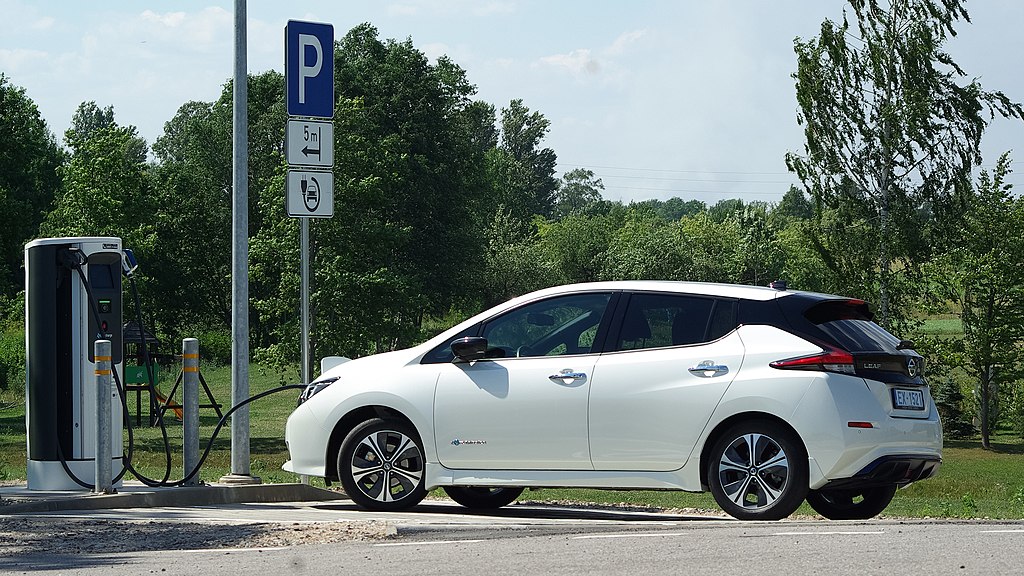
As car travel is so dominating in our present system, the development of the car is crucial. There are some fundamental shortcomings of the present conventional car. It depends on fossil oil; it is comparatively heavy, often close to one tonne; the air pollution caused by cars is serious; cars are noisy especially at higher speeds and take much space in cities, etc. Environmentally better alternatives to the conventional car are those using less fuel, either because of being diesel, or smaller, and those using alternative fuels, such a bioethanol or biogas.
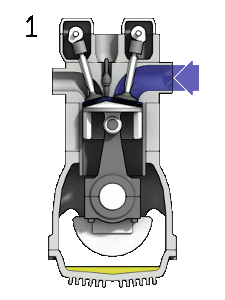 In a conventional car, the combustion motor is very inefficient. Typically, some 18% (petrol) or 22% (diesel) of the energy in the fuel is used to move the wheels. The rest becomes heat. In an electric car this efficiency is much higher, at best case closer to 80-90%, which is, about four times as much as the combustion engine. That is why in a sustainable transport system, electric cars are expected to be an important component. The largest difficulty today is the means to store electricity, the batteries. The best cars today allow about 150 km until batteries need recharging. This is not necessarily a serious shortcoming, since the large majority of car travels are much shorter. Recharge of electric cars may be done at home, for plug-in cars, at charging stations or by fast exchange of batteries. There are also hybrid cars (electric and combustion), using electric the motor for the many small trips and the conventional for longer ones. A sustainable electric car requires of course that the electricity used is renewable.
In a conventional car, the combustion motor is very inefficient. Typically, some 18% (petrol) or 22% (diesel) of the energy in the fuel is used to move the wheels. The rest becomes heat. In an electric car this efficiency is much higher, at best case closer to 80-90%, which is, about four times as much as the combustion engine. That is why in a sustainable transport system, electric cars are expected to be an important component. The largest difficulty today is the means to store electricity, the batteries. The best cars today allow about 150 km until batteries need recharging. This is not necessarily a serious shortcoming, since the large majority of car travels are much shorter. Recharge of electric cars may be done at home, for plug-in cars, at charging stations or by fast exchange of batteries. There are also hybrid cars (electric and combustion), using electric the motor for the many small trips and the conventional for longer ones. A sustainable electric car requires of course that the electricity used is renewable.
Also, the combustion motor car has been made more sustainable by using renewable fuels. The biofuels include biogas, bioethanol, and biodiesel. In some situations, the use of biofuels may be the best alternative. When food waste and other organic waste in a city are used for biogas production, it may be sufficient for all city buses, thus establishing a sustainable recycling system. Large-scale production of bioethanol is only sustainable if it is not using fossil fuels during production, or it is competing with other more important uses of the crop. Bioethanol is today the dominant biofuel but is not considered to be a long-term solution. Similar considerations are valid for bio diesel. Both are today mixed in standard fossil fuels to decrease CO2 emissions from traffic.
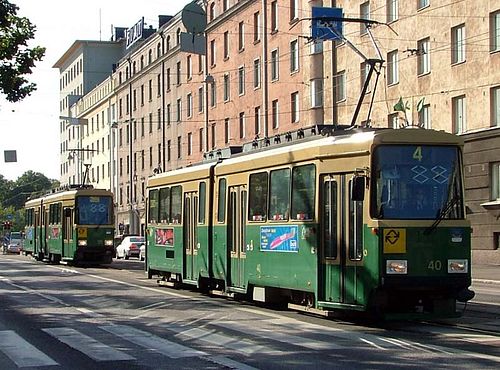
A large part of the energy consumption in cars is caused by friction between the tyres and the road. That is why rail traffic is energy-wise so much better than road traffic. Electric vehicles on rail, trains and trams, are the most energy-efficient way to move both people and goods on land. A well functioning metro, tram, and local train systems are important components of a sustainable transport system in a city. Train traffic is also the best alternative for freight traffic on land. Fast trains have the possibility to replace much air travel without much time loss and much comfortably running from city centre to city centre, with dramatically reduced environmental impact.
Air traffic only accounts for only about 1% of total travel, but still about 800 million passengers were carried by air in 2010 in the EU-27. Air traffic has the largest environmental impact per person kilometre. There are small possibilities to reform air traffic into a more sustainable system, although research is ongoing to produce biofuel for aeroplanes from wood. The most reasonable development now is to substitute shorter air travels by fast trains, and use more ICT for business meetings.
Boat traffic is expanding fast, both for business and pleasure. Environmental impacts from boat traffic include emissions of carbon dioxide and acidic SOx, especially from the use of oil with high sulphur content. There are also many cases of toilet and other organic waste emitted right into the sea. Regulations to reduce environmental impacts of boat traffic are much needed, but only slowly implemented.
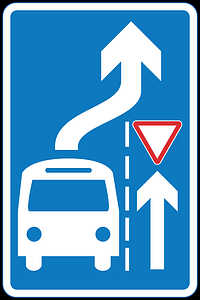 Obviously, transport would be more efficient if more people would share the same vehicle. This is done in public transport. Here the emissions per person kilometre is drastically reduced both when bus is used, and even more so in train or tram. Traffic infrastructure would be much better with more public and less private transport, and congestion would diminish. Research suggests that most important for good public transport is to avoid waiting and time lags.
Obviously, transport would be more efficient if more people would share the same vehicle. This is done in public transport. Here the emissions per person kilometre is drastically reduced both when bus is used, and even more so in train or tram. Traffic infrastructure would be much better with more public and less private transport, and congestion would diminish. Research suggests that most important for good public transport is to avoid waiting and time lags.
Halfway between private and public transport is car sharing, that is, when a group of people, e.g. living in the same neighbourhood, have a number of cars together, a so-called carpool. Car sharing has many advantages. The cars are used more when compared to private car, the maintenance of the cars may be organized in a way so that each user is not concerned. If car sharing is a good alternative depends on the situation for the individual, but car sharing is increasing in big cities, and the number of cars in big cities are decreasing in many countries.
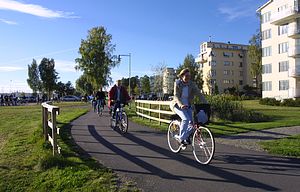 Biking has many advantages as means of transport. There are no emissions, the infrastructure needed for biking (bike paths and parking) is small, the costs are small compared to cars, it is healthy for the individual, and many bikers like to be “outside”, rather than inside a car or bus. Most bikers do not travel long distances. Mean speed of biking is about 20 km; in 20 minutes you travel some 6 km. Biking in cities are on the increase, also in large cities, e.g. Paris and London, and in others, e.g. Copenhagen and Amsterdam, it is established since long. In Stockholm, 150,000 commute daily to the workplace by bike, a figure expected to double in ten years. There is a huge untapped potential for biking in cities in Central and Eastern Europe.
Biking has many advantages as means of transport. There are no emissions, the infrastructure needed for biking (bike paths and parking) is small, the costs are small compared to cars, it is healthy for the individual, and many bikers like to be “outside”, rather than inside a car or bus. Most bikers do not travel long distances. Mean speed of biking is about 20 km; in 20 minutes you travel some 6 km. Biking in cities are on the increase, also in large cities, e.g. Paris and London, and in others, e.g. Copenhagen and Amsterdam, it is established since long. In Stockholm, 150,000 commute daily to the workplace by bike, a figure expected to double in ten years. There is a huge untapped potential for biking in cities in Central and Eastern Europe.
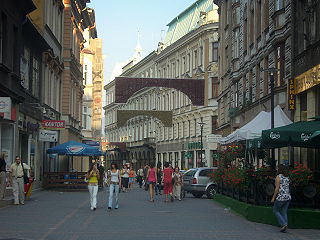 Walking is of course positive both for health and environment. The recommendation is that each one of us need to take about 10,000 – 12,000 steps daily to keep healthy. This corresponds to about one hour of walking a day, which will take you about 6 km.
Walking is of course positive both for health and environment. The recommendation is that each one of us need to take about 10,000 – 12,000 steps daily to keep healthy. This corresponds to about one hour of walking a day, which will take you about 6 km.
Urban planning based on car use does not promote sustainability. Shopping malls designed after American models assume that almost all customers use his/her own car. A consequence is that small shops in the city centre have difficulties to attract customers and may be forced to close. This makes the city centre less alive and interesting. Small shops have higher prices, but then the costs of car use are not included in the comparison. In city centres, car free areas are increasing, which is not negative for shop owners.
The most sustainable alternative for mobility is not to move at all. This has become a realistic alternative with the development of information and communication technologies, ICT. Many business meetings can now be made using video conferencing via the Internet rather than travelling. This was illustrated in the months after the September 11 when air travel decreased drastically and many business trips were substituted for by ICT. Even if a small share of trips are substituted for by ICT, it would be important, especially for those where long distance travel is needed. A related phenomenon is “working home” strategies using computer and phone. Many office workers work in home one day in a week, which reduced commuting by 20%, which is significant. Savings when reducing travel is triple: time, costs and emissions.
Materials for session 7b
Basic level
- Read A Sustainable Baltic Region, session 6, chapter 6: Technical Solutions – Improved Transport Technologies.
- Read A Sustainable Baltic Region, session 6, chapter 4: Poland – The Private Car and Public Transport in Conflict.
Medium level (widening)
- Read A Sustainable Future for Transport: Towards an integrated, technology-led and user-friendly system (EU Commission report)
- International Association of Public Transport, UITP
Advanced level (deepening)
- How Electric Cars Work in Howstuffworks by Marshall Brain
- The UITP Sustainable Development
References
Tengström, E. and M. Thynell. (eds.) 1997. Towards Sustainable Mobility – Transporting people and goods in the Baltic Region. A Sustainable Baltic Region. Session 6. Baltic University Press, Uppsala.
BUP Sustainable Development Course
